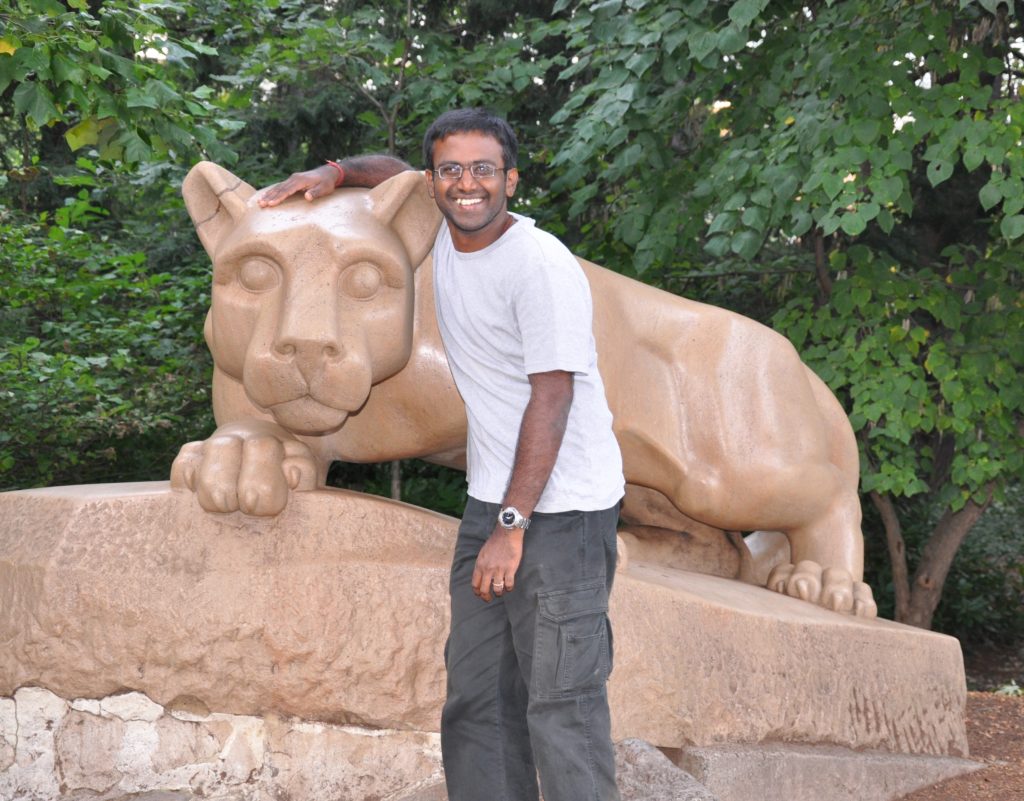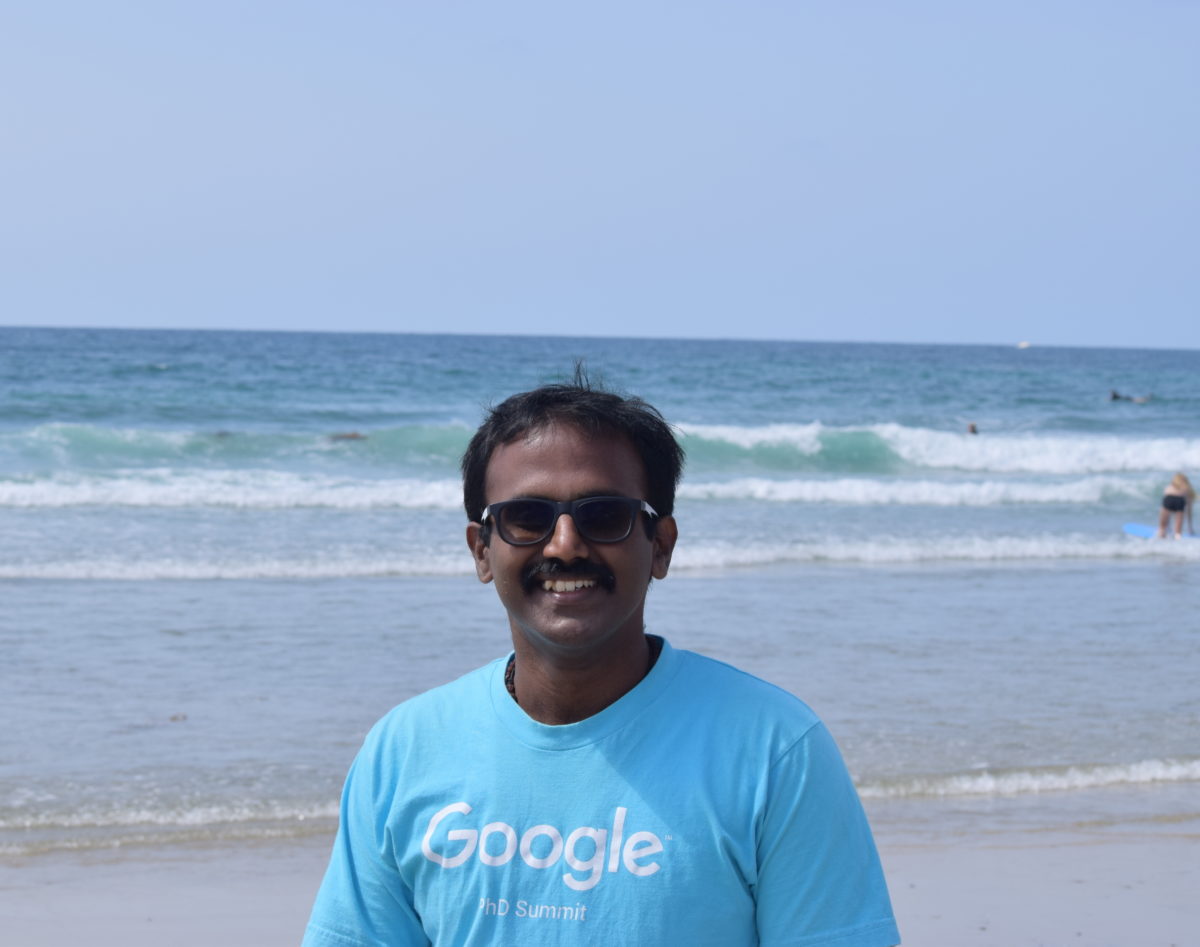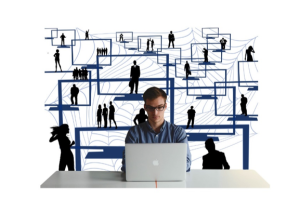Please tell us something about yourself.
My name is Kadappan and I am from India. I work as a Senior EM Modeling Engineer at PSemi, San Diego. I graduated from Pennsylvania State University with a PhD in Electrical Engineering. I completed my Master’s in RF and Microwave Engineering from Indian Institute of Technology (IIT), Kharagpur.
You came from India to the USA for your PhD studies. Can you tell us about this journey of yours? How did you decide to do PhD?
I had the fortune of learning electromagnetics (EM) from some of the good professors right from my high school days. I also had the opportunity to strengthen my fundamentals through some of the eminent professors in electrical engineering from IIT Madras and IIT Kharagpur. More than teaching me the fundamentals, they made me question every aspect of engineering that came my way and in turn seek answers for each of these questions. Right from my undergraduate days, I always assimilate the fundamentals of a subject or a concept that is being taught to me by visualizing as if I am explaining the same thing to someone else based on my own understanding. I try to extend it from the framework of fundamentals that I have already grasped in the past. If it doesn’t fit in the existing framework of my understanding, then I start questioning my fundamentals and rebuild it till it perfectly fits in. I still vividly remember many of the long discussions I used to have with my professors in trying to improve my understanding of the subject. As a result, in a matter of one year into my master’s, I was able to establish a strong foundation in Electromagnetics.
Inspired by these professors, who were really humble and yet astounding in their fundamentals of the subject, I decided to pursue a career in research integrated with teaching and clearly, PhD from one of the top tier universities became the way for me to go.

Can you please tell us something about your research work at Penn State and Georgia Tech Universities? What inspired you to pursue those research topics?
I was working in computational electromagnetics (CEM) for my master’s thesis. Working in the field of CEM I had the liberty to own a virtual lab in my university dormitory, where I would simulate these experiments and find answers. By the end of my Master’s degree, I eventually ended up programming a full 3D time domain based EM simulator which enabled me to simulate just about anything that I wanted to know in EM. Also, since these simulations happened in time domain it helped me to effectively visualize and relate to EM interactions as supposed to visualizing them in an abstract domain. Enabled by this strong background, I continued to work on CEM for my PhD too. I worked on addressing some of the challenges in multiscale EM simulations and low- frequency simulations. These are the two classes of problems where the CEM solvers predominantly tend to exhibit instability and break down. I developed hybrid computational techniques since just one technique alone couldn’t address all of these problems. I also worked on speeding up the commonly used time domain technique called as Finite Difference Time Domain (FDTD) method.
Intrigued by the System-on-Package(SoP) designs and want to adapt some of the multiscale CEM algorithms to full chip EM simulations, I joined the Packaging Research Center (PRC), at Georgia Tech. PRC has been one of the pioneer research centers in the world to work on glass interposer for packaging. At PRC, I was mentoring graduate students in the area of high- speed electrical design for glass interposers.
You have worked both in the industry and academia after your PhD. How would you compare your experiences? Do you have any advice for our young professionals?
Each of them has their own pros and cons. In academia, the research timelines are relatively relaxed when compared to industrial environment. This provides academicians with the opportunity to explore the topic of study in greater depths. In terms of research areas, I find that academia provides more avenues to explore nascent research areas when compared to industry, as industries are usually interested in a relatively mature technology. Industries usually work with stringent design requirements and harsher deployment conditions when compared to academia.
Above all, I feel that in industry one will have the opportunity to see how the products directly enhance the customer’s lives in a short span of time and in academia, one has the privilege and onus of shaping and training students and in turn the future generation.
You are an active volunteer for Isha Foundation. Can you please tell us something about your encounter with Isha Foundation and your volunteering experiences?

Within the first few months of my PhD program, the training that my advisor Prof. Raj Mittra, gave was so comprehensive that I pretty much knew the roadmap of my thesis and possible challenges that I would be facing towards its completion. Also in this process, even some of my unanswered fundamental EM questions that I had for years found their answers. Since then I knew that it was only a question of time before I could graduate. It was during this phase that some fundamental questions about my existence in this world arose within me and then I intensely started seeking answers to these questions. During this search, I came across the Inner Engineering program offered by Isha Foundation and I happened to attend one of them. I went to this program thinking that they would give me a lecture on the fundamentals of life that I was searching for. But instead, to my surprise, Sadhguru Vasudev – the founder of Isha Foundation, gave me a meditative practice through which one can realize the fundamentals of one’s life experientially. It was so scientifically structured that it appealed to me and I decided to try it out. Since then I have been practicing it for the last eight years and it has delivered me to a state where my clarity, focus, and energy levels have multiplied many a time. As I strengthened my inner stability and balance through these practices, it became a natural process for me to reach out to another life in need. Since then I started volunteering for Isha Vidhya, one of the many social outreach projects that Isha Foundation runs in a sustainable way. Isha Vidhya focuses on delivering quality education to children in rural villages of Tamil Nadu, India, changing the quality of life for these children and their families.
When one discovers ingenious ways of doing things and addressing problems thereby directly impacting people’s livelihood, and when one can see the result of his work in front of his eyes, it brings an overwhelming sense of joy and tremendous satisfaction to the person. I wish that everyone has at least some opportunity in their life to volunteer their skill set in some way.
Being a young achiever yourself, can you please give our young professionals your word of wisdom as they plan for their career?
Until a few years ago, if we could find one good teacher or professor we would consider it to be a great fortune. It has always been those one or two good teachers who make a profound and everlasting impact in our lives and in a way define how we will live the rest of our lives in this world. But today with a few keystrokes we can find lectures of many such great minds through the internet, irrespective of whether their lecture was recorded at IIT or MIT and covering the entire spectrum of engineering topics. Through the recent technological advancements, dissemination of knowledge has become so effective that as long as one is inspired to learn, one can learn pretty much anything.
While shaping my career I was primarily focused on gaining knowledge about external engineering. But it was much later that I realized that I need to do some inner engineering too. One must spend time and energy on exploring the self and establishing oneself in a state of peace and joy. Only then one can function at the peak potential and continue to push one’s limits and grow. With an equanimous mind, one can solve any issues that one may face, with intelligence and clarity, without getting flustered.
Article by Nidhi Agrawal, Senior Assistant Editor, IMPACT by IEEE Young Professionals






